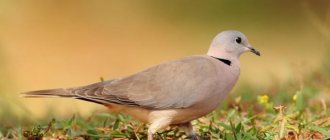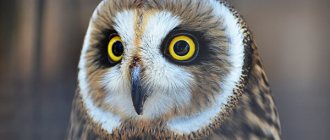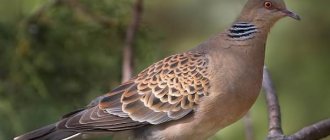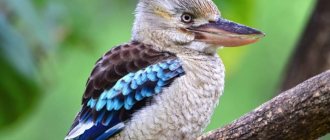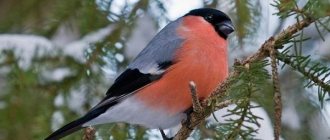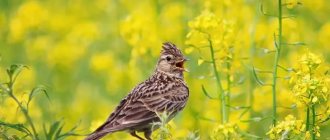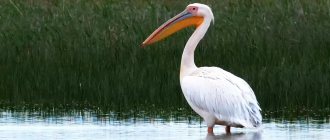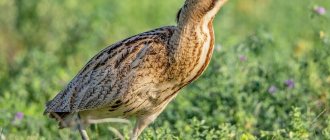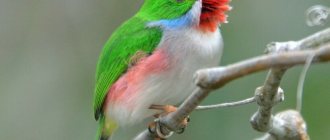- Wild animals
- >>
- Birds
The emu is an unusual bird.
She doesn't tweet, but grumbles; does not fly, but walks and runs at a speed of 50 km/h! These birds belong to a group of non-flying birds, the so-called runners (ratites). It is the oldest form of bird and includes cassowaries, ostriches and rheas. Emus are the largest birds native to Australia and the second largest bird in the world. They are most often found in forested areas and try to avoid densely populated areas. This means that emus are more aware of their environment than meets the eye. Although emus prefer to be in wooded or bushy areas where there is plenty of food and cover, it is important for them to be aware of what is happening around them.
Origin of the species and description
Photo: Emu
The emu was first discovered by Europeans in 1696, when explorers visited western Australia. An expedition led by Captain Willem de Vlaming from Holland searched for the missing ship. The birds were first mentioned under the name "Cassowary of New Holland" by Arthur Philip, who traveled to Botany Bay in 1789.
The species was identified by ornithologist John Latham in 1790 from the Australian region of Sydney, a country that was then known as New Holland. He provided the first descriptions and names of many Australian bird species. In his original description of the emu in 1816, French ornithologist Louis Pierre Vieillot used two generic names.
Video: Emu
The next topic was the question of what name to use. The second is formed more correctly, but in taxonomy it is generally accepted that the first name given to the organism remains valid. Most current publications, including the Australian Government's position, use Dromaius, with Dromiceius mentioned as an alternative spelling.
The etymology of the name "emu" is not certain, but it is believed to come from the Arabic word for large bird. Another theory is that it comes from the word "ema", which is used in Portuguese to refer to a large bird, akin to an ostrich or crane. Emus have a significant place in Aboriginal history and culture. They inspire them to perform certain dance steps, are the subject of astrological mythology (emu constellation) and other historical creations.
Emu and man
Indigenous Australians used emus as a food source. They were very inventive in their methods of catching this bird. Australian aborigines speared animals while they were at a watering hole and poisoned water wells. They caught emus in the net and attracted attention by imitating the sounds they make. They also sometimes dressed in the skins of previously killed emus. Each part of the animal carcass was used for a specific purpose. In addition to meat, fat was collected for butter and to polish weapons, and bones and sinew were used as temporary knives and binding tools.
In addition, emu was used for medicinal purposes. There is some evidence that the oil has anti-inflammatory properties. Tests on rats have shown that the effect is more significant in the treatment of arthritis and joint pain.
Among the Australian Aborigines, the emu occupied a prominent place in mythology. According to one myth, the sun appeared when an emu egg was thrown into the sky. The emu is now unofficially considered the national bird of Australia.
Appearance and features
Photo: Emu bird
The emu is the second tallest bird in the world. The largest individuals can reach 190 cm. The length from tail to beak ranges from 139 to 164 cm, with males averaging 148.5 cm and females 156.8 cm. The emu is the fourth or fifth heaviest living bird today. Adult emus weigh between 18 and 60 kg. Females are slightly larger than males. The emu has three toes on each foot, which are specially adapted for running and are shared by other birds such as bustards and quail.
Emu have vestigial wings, each wing having a small tip at the end. The emu flaps its wings while running, possibly as a means of stabilization when moving quickly. They have long legs and necks, and a moving speed of 48 km/h. The legs have a reduced number of bones and associated muscles of the foot, unlike other birds. When walking, the emu takes steps of about 100 cm, but at full gallop the stride length can reach 275 cm. The legs are devoid of feathers.
Like the cassowary, the emu has sharp claws, which serve as the main defensive element and are used in battle to strike the enemy. They have good hearing and vision, which allows them to detect threats early. A pale blue neck is visible through the sparse feathers. They have gray-brown shaggy plumage and black tips. The radiation from the sun is absorbed by the tips, and the inner plumage insulates the skin. This prevents the birds from overheating, allowing them to be active during the heat of the day.
Interesting fact: The plumage changes color due to environmental factors, giving the bird natural camouflage. Emus in drier areas with red soils have a rufous tint to their feathers, while birds living in humid conditions tend to have darker shades.
Emu eyes are protected by thread-like membranes. These are translucent secondary eyelids that move horizontally from the inner edge of the eye to the outer edge. They act as visors, protecting the eyes from dust common in windy, arid regions. The emu has a tracheal bursa, which becomes more visible during mating season. With a length of more than 30 cm, it is quite spacious and has a thin wall and an 8 cm long hole.
Economic significance
Emu is raised on special farms. Apart from Australia, such farms are mainly common in North America, Peru and China.
Emus are mainly bred for their meat, skin and oil. Emu meat is lean, with a fat content of less than 1.5% and a cholesterol level of 85 mg per 100 g, so this meat can be compared to lean meat. Bird fat is used in the production of cosmetics, dietary supplements and various medications. The oil consists of fatty acids such as oleic (42%), palmitic and linoleic (21% each).
Emu leather is used to make wallets and shoes (often in combination with other leathers). The feathers and eggs of these birds are used in arts and crafts and various crafts.
Where does the emu live?
Photo: Emu Australia
Emus are found only in Australia. These are nomadic birds and their distribution range covers most of the continent. Emus were once found in Tasmania, but were wiped out by early European settlers. Two dwarf species that inhabited Kangaroo Island and King Island also disappeared as a result of human activity.
Emus were once common on the east coast of Australia, but are now rarely found there. The development of agriculture and the provision of water for livestock in the interior of the continent has increased the range of emus in arid regions. Giant birds live in a variety of habitats throughout Australia, both inland and near the coast. They are most common in savanna and sclerophyll forest areas and least common in densely populated areas and arid areas with annual rainfall not exceeding 600 mm.
Emus prefer to travel in pairs, and although they can form large schools, this is not a typical behavior and arises from a general need to move towards a new food source. The Australian ostrich can travel long distances to reach abundant feeding areas. In the western part of the continent, emus' movements follow a clear seasonal pattern - north in summer, south in winter. On the east coast, their wanderings seem more chaotic and do not follow a set pattern.
Accommodation
Found throughout most of mainland Australia, although it avoids densely populated areas, dense forest and semi-arid areas. They mostly walk in pairs, but at the same time they can form huge flocks. This atypical social behavior occurs when there is a need to obtain food.
Emus can also group together to travel long distances. For example, in Western Australia, emu movements follow a seasonal pattern - north in summer and south in winter.
What does the emu eat?
Photo: Emu
Emus eat a variety of native and introduced plant species. Their plant diet depends on seasonality, but they also eat insects and other arthropods. This provides most of their protein needs. In Western Australia, food preferences are observed among traveling emus, who eat Acacia aneura seeds until the rains begin, at which point they move on to fresh grass shoots.
In winter, birds feed on cassia pods, and in spring on grasshoppers and fruits of the woody shrub Santalum acuminatum. Emus are known to feed on wheat and any fruits or other crops they have access to. They climb over high fences if necessary. Emus are important dispersers of large, viable seeds, which contributes to flower biodiversity.
One unwanted effect of seed drift occurred in Queensland in the early twentieth century when emus carried prickly pear cactus seeds to various locations, and this led to a series of campaigns to hunt emus and prevent the spread of the invasive cactus' seeds. The cacti were eventually controlled by an introduced moth (Cactoblastis cactorum), whose larvae feed on the plant. This became one of the earliest examples of biological control.
Small stones are ingested by emus to aid in the grinding and digestion of plant material. Individual stones can weigh up to 45g, and birds can have as many as 745g of stones in their stomachs at one time. Australian ostriches also eat charcoal, although the reason for this is unclear.
The diet of the emu consists of:
- acacia;
- casuarina;
- various herbs;
- grasshoppers;
- crickets;
- beetles;
- caterpillars;
- cockroaches;
- ladybugs;
- moth larvae;
- ants;
- spiders;
- centipedes.
Domesticated emus have ingested shards of glass, marble, car keys, jewelry, nuts and bolts. Birds drink infrequently, but whenever possible they consume large amounts of liquid. They first explore the pond and surrounding areas in groups, and then kneel at the edge to drink.
Ostriches prefer to be on solid ground when drinking rather than on rocks or mud, but if they sense danger they will remain standing. If the birds are not disturbed, ostriches can drink continuously for ten minutes. Due to the lack of water sources, they are sometimes forced to go without water for several days. In the wild, emus often share water sources with kangaroos and other animals.
Interesting Facts
People have always been interested in these unusual birds. Thanks to observations, today we know many interesting facts about Emu ostriches:
- The birds are tall - up to 170 cm, weigh up to 55 kg.
- Emus can fly because they lack a keel.
- They run quickly, reaching amazing speeds of up to 50 km per hour.
- The size of the steps reaches 3 meters.
- The brain and eyes of birds are the same size.
- Birds do not have teeth, so they simply swallow stones, glass and other sharp objects to promote proper digestion.
- When in danger, Emu does not hide its head in the sand, but runs.
- Adapts perfectly to temperatures from -5 to +45 degrees.
- He doesn’t bathe, but seems to float in the sand.
- Females and males have the same shade of feathers; they can be distinguished by the characteristic sounds with which the male calls the female during the mating season.
- The eggs have interesting shades - they can be almost black, that is, dark blue or dark green, each weighing up to 900 grams.
- The male is always in charge of incubating and raising the offspring.
Features of character and lifestyle
Photo: Emu bird
Emus spend their day foraging for food, preening their plumage with their beaks, dust bathing, and resting. They are generally sociable except during breeding season. These birds can swim when necessary, although they only do so if their area is flooded or a river needs to be crossed. Emus sleep intermittently, waking up several times during the night. When falling asleep, they first squat on their legs and gradually transition into a sleepy state.
If there are no threats, they fall into deep sleep after about twenty minutes. During this phase, the body lowers until it touches the ground with the legs folded underneath. Emus wake up from deep sleep every ninety minutes to snack or defecate. This period of wakefulness lasts 10-20 minutes, after which they fall asleep again. Sleep lasts about seven hours.
The emu makes a variety of booming and wheezing sounds. The powerful hum can be heard up to 2 km away, while the lower, more resonant call produced during the breeding season can attract mates. On very hot days, emus breathe to maintain their body temperature, their lungs acting as coolers. Emus have a relatively low metabolic rate compared to other types of birds. At -5 °C, the metabolic rate of a sitting emu is about 60% of that of a standing emu, partly because the lack of feathers under the stomach results in a higher rate of heat loss.
Nutrition
The diet of Australian emus is based on plant foods, like that of the related cassowaries. Partially present animal component. Birds feed mainly in the morning. Their attention is attracted by young shoots, plant roots, grass, and cereal crops. Bird raids on grain crops cause damage to farmers, who not only drive away the feathered robbers, but also shoot the uninvited guests.
Emu ostriches travel long distances in search of food. They feast on plant buds, seeds, fruits, and are very fond of juicy fruits. Birds need water and must drink at least once a day. If they are near a pond, they go to water several times a day.
Australian emus do not have teeth, like African ostriches, so to improve digestion, birds swallow small pebbles, sand, even pieces of glass, so that with their help the swallowed food is crushed. In specialized nurseries, the necessary component for high-quality digestion is also added to the birds’ food.
Food in captivity in summer consists of a mixture of grain and grass, and in winter - hay with mineral supplements. Emus love sprouted grains, green oats, cranberries, and alfalfa. Birds willingly eat grain bread, carrots, peas, shells, cake, beets, potatoes, and onions.
Under natural conditions, Australian ostriches sometimes hunt small animals; in nurseries they are mixed with bone meal, meat, and chicken eggs to compensate for the lack of food of animal origin.
The amount of food per day is approximately 1.5 kg. You should not overfeed the feathered giants. Water must be constantly available, although birds can go without it for a long time. The feeding of the chicks is different. The main food for young animals are insects, various rodents, lizards, and worms.
Until the age of eight months, growing emus require protein food. An excellent appetite helps you gain weight quickly. If after birth the babies weigh only 500 g, then by the first year of life they are difficult to distinguish from adults.
Social structure and reproduction
Photo: Emu chick
Emus form breeding pairs from December to January and can stay together for about five months. The mating process occurs between April and June. More specific times are determined by climate, as birds nest during the coolest part of the year. Males construct a crude nest in a semi-closed depression on the ground using bark, grass, sticks and leaves. The nest is placed where the emu has control of its surroundings and can quickly detect approaching predators.
Fun Fact: During courtship, females walk around the male, stretching their necks back, ripping off their feathers, and emitting low, monosyllabic calls that sound like drums. Females are more aggressive than males and often fight over chosen mates.
The female lays one clutch of five to fifteen very large green eggs with thick shells. The shell has a thickness of about 1 mm. The eggs weigh from 450 to 650 g. The surface of the egg is granular and pale green. During the incubation period the egg becomes almost black. The male may begin incubating the eggs before the clutch is complete. From that time on, he does not eat, drink or defecate, and only gets up to turn the eggs.
During the eight-week incubation period, it loses a third of its weight and survives on stored fat and morning dew that it takes from the nest. Once the male sits on the eggs, the female can mate with other males and create a new clutch. only some females stay and defend the nest until the chicks begin to hatch.
Incubation takes 56 days, and the male stops incubating the eggs shortly before they hatch. Newborn chicks are active and can leave the nest within a few days of hatching. At first they are about 12 cm tall and weigh 0.5 kg. They have distinctive brown and cream stripes for camouflage that disappear after three months. The male guards the growing chicks for up to seven months, teaching them how to find food.
Lifestyle and habitat
Under natural conditions, the emu lives only in Australia. The habitat of the black emu is the southeast of the continent, the brown emu is the southwest, and the light emu is the north of the continent.
Interesting fact: emus are not only good runners, but also good swimmers. They like to spend time in bodies of water, but they can go for a very long time without drinking water if there is no opportunity.
Emus are sedentary birds. But among them there are also subspecies that prefer a nomadic lifestyle. They travel great distances in search of food. In summer they migrate to the northern regions of the continent, in winter to the southern regions. Emus live alone, but roam in small groups of about 5 individuals.
These birds have good hearing and sharp eyesight. Females and males do not have obvious external differences, so it is very difficult to distinguish them, but it is possible - by their voice. Females make a louder cry. Birds are active during the daytime and sleep at night. Emus sleep sitting up. About every hour and a half, the birds wake up due to any irritants and fall asleep again.
Natural enemies of emus
Photo: Ostrich bird in Australia
There are few natural predators for emus in their habitat due to the bird's size and speed of movement. Early in its history, the species may have encountered numerous terrestrial predators, now extinct, including the giant lizard Megalania, the thylacine marsupial, and possibly other carnivorous marsupials. This explains the well-developed ability of emus to protect themselves from land-based predators.
The main predator today is the dingo, a semi-domesticated wolf, the only predator in Australia before the arrival of Europeans. The dingo aims to kill the emu by trying to hit its head. The emu, in turn, tries to push the dingo away by jumping into the air and kicking the leg.
The bird's jumps are so high that it is difficult for a dingo to compete with it to threaten its neck or head. Therefore, a correctly calculated jump, coinciding with a dingo's lunge, can protect the animal's head and neck from danger. However, dingo attacks do not have a strong impact on the number of birds in the Australian fauna.
The wedge-tailed eagle is the only avian predator that attacks adult emus, although it is more likely to target small or juvenile ones. Eagles attack emus by swooping down quickly and at high speed, aiming for the head and neck. In this case, the jumping technique used against dingoes is useless. Birds of prey try to target emus in open spaces where the ostrich cannot hide. In such a situation, the emu uses a chaotic movement technique and often changes direction of movement, trying to evade the attacker. There are a number of predators that feed on emu eggs and eat the small chicks.
These include:
- large lizards;
- imported red foxes;
- wild dogs;
- wild boars sometimes feed on eggs and chicks;
- eagles;
- snakes.
The main threats are habitat loss and fragmentation, collision with vehicles and deliberate hunting. In addition, fences interfere with the movement and migration of emus.
Features of emu breeding
Briefly about the main points in emu breeding:
- to create a farm you must obtain a state license and pass a number of inspections;
- a large area will be required - to keep one ostrich you need a closed area of at least 15 m2, an individual open enclosure of at least 50 m2 with a canopy and a fence more than 1.5 m in height;
- the fence is made of special material so that the ostrich cannot stick its head into it and injure it;
- it is necessary to insulate the room for the winter - it should not only be warm, but also dry, ventilated, without drafts;
- You should organize regular cleaning of the room and enclosure, change of bedding, and disinfection of the floor covering;
- build special feeders and drinking bowls, organize feeding and a constant supply of clean water;
- You need to add small pebbles to the feeders along with food, since emus do not have teeth;
- observe the feeding regime - you cannot overfeed ostriches, otherwise the quality of the meat will deteriorate and it will lose its dietary properties;
- For feeding you will need special feed, vegetables, fruits, grass, hay.
Bird or beast?
Due to the inability to fly, the emu was classified as an animal, but ornithologists came to the general conclusion that it was a bird.
It’s worth remembering: you can’t get too close to an emu. The ostrich has fairly strong legs and is capable of killing with one blow. Even a larger predator can easily break ribs or other thin bones. When an animal attacks, the emu either fights off with its legs and beak, or runs away, accelerating up to 60 km/h. Excellent hearing and vision also protect the bird from danger.
Males and females are similar, and even experienced poultry keepers distinguish them only during the mating season. An interesting feature of emus is that females do not incubate their offspring, only males do this. The main task of the ostrich is to lay eggs.
Emus prefer a solitary lifestyle
